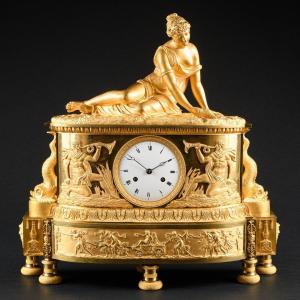See our website for more detailed photos: LINK
This spectacular and large gilt bronze Empire clock “Nymphe à la Coquille”, attributed to Claude Galle, has a bastion-shaped case which holds the movement of this clock. On top of this case we see a scene of a young woman sitting on a meadow full with flowers. She is holding a shell in her right hand which she is using to take water from a small pond. This scene is clearly inspired by the marble sculpture “Nymphe à la Coquille”. This sculpture, which was previously owned by Camille Borghèse, is currently in the collection of the Louvre Museum in Paris (inventory number MR 309).
The movement of this clock has a white enameled dial with black enameled Roman numerals. Beside it are figurative plaques of Tritons blowing their horns. And to the side of the clock case we see two dolphins. The base of this Empire clock “Nymphe á la Coquille” has a beautifully chiseled bas-relief showing us a classic processional scene with Amor on his chariot, and groups of women, probably on their way to a wedding ceremony. This base stands on six toupie feet.
Further, this impressive and stunningly beautiful Empire clock has gilt bronze ornamentation in the form of two river gods, mascarons and palmettes. The elegant and lifelike sculpture of the woman has clearly been sculpted and chiseled by a great master, like Claude Galle.
Product Details
The eight-days going movement has a wire suspension pendulum. It strikes the hour and half hour on a bell. The clock is in a excellent and perfect working condition. And it has recently been cleaned and serviced by a professional clock maker. The clock comes complete with its pendulum, key and bell.
Paris circa 1810.
Dimensions: 51 cm high, 52 cm wide, 16 cm deep.
Nymphe À La Coquille
Some sources refer to the young woman as Venus. However, we believe that she is actually Latona. In Greco-Roman mythology, Leto or Latona was a daughter of Titans. Supreme God Zeus conceived her with the divine twins Artemis and Apollo. Hera, Zeus’ jealous wife, wanted to prevent Latona’s delivery. Even after Latona’s delivery she was thwarted, as by the Lycian farmers. These farmers did not want Latona to stay and scoop water from a shallow pool with a conch to quench her thirst. This story is in the Metamorphoses of the Roman poet Ovid.
Comparative Literature
- An identical model by Claude Galle appeared in auction at Koller, Zurich on 18 September 2008, the dial signed “Galle Rue Vivienne à Paris”.
We send this article worldwide, professionally packaged, with registered and fully insured shipping at a fair price.




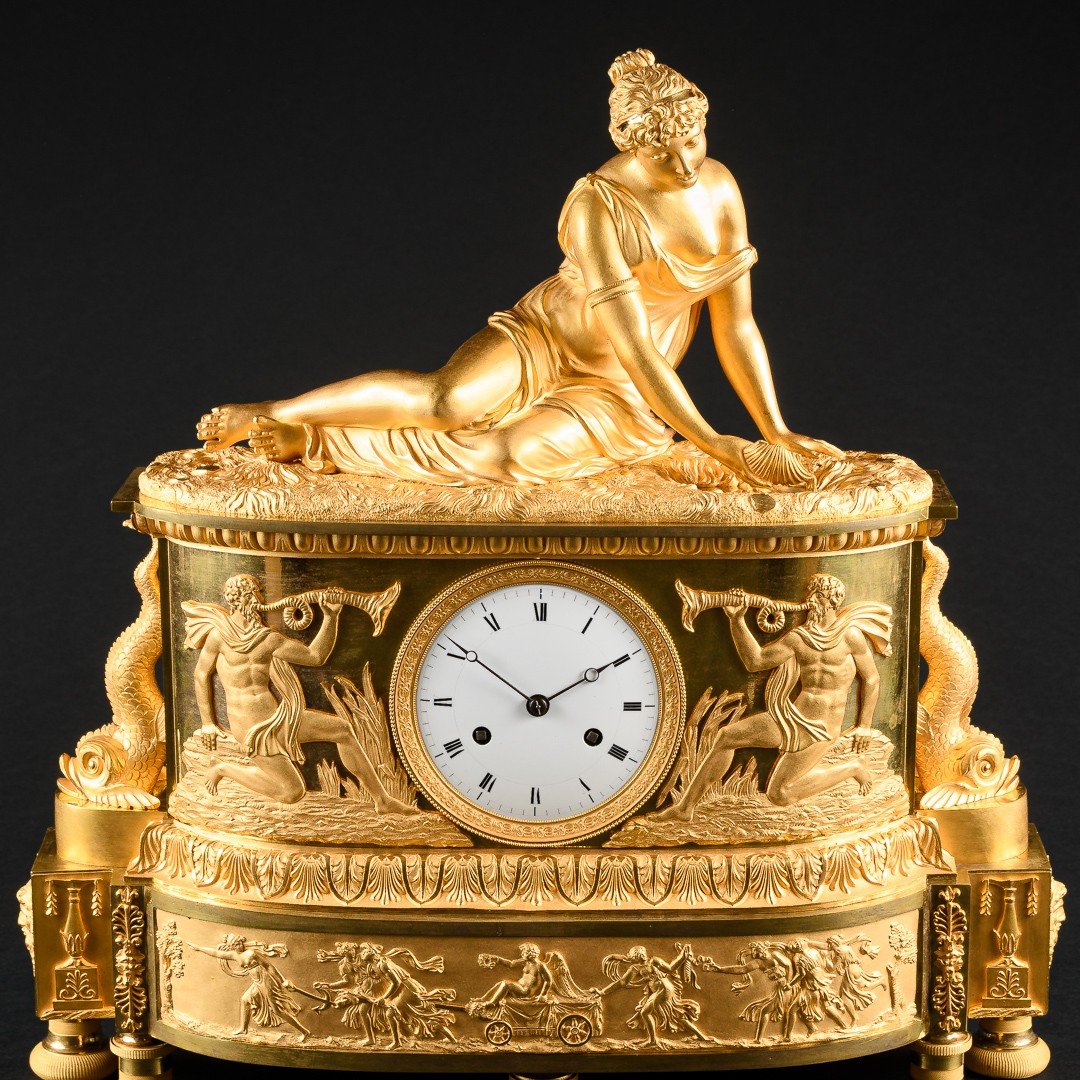


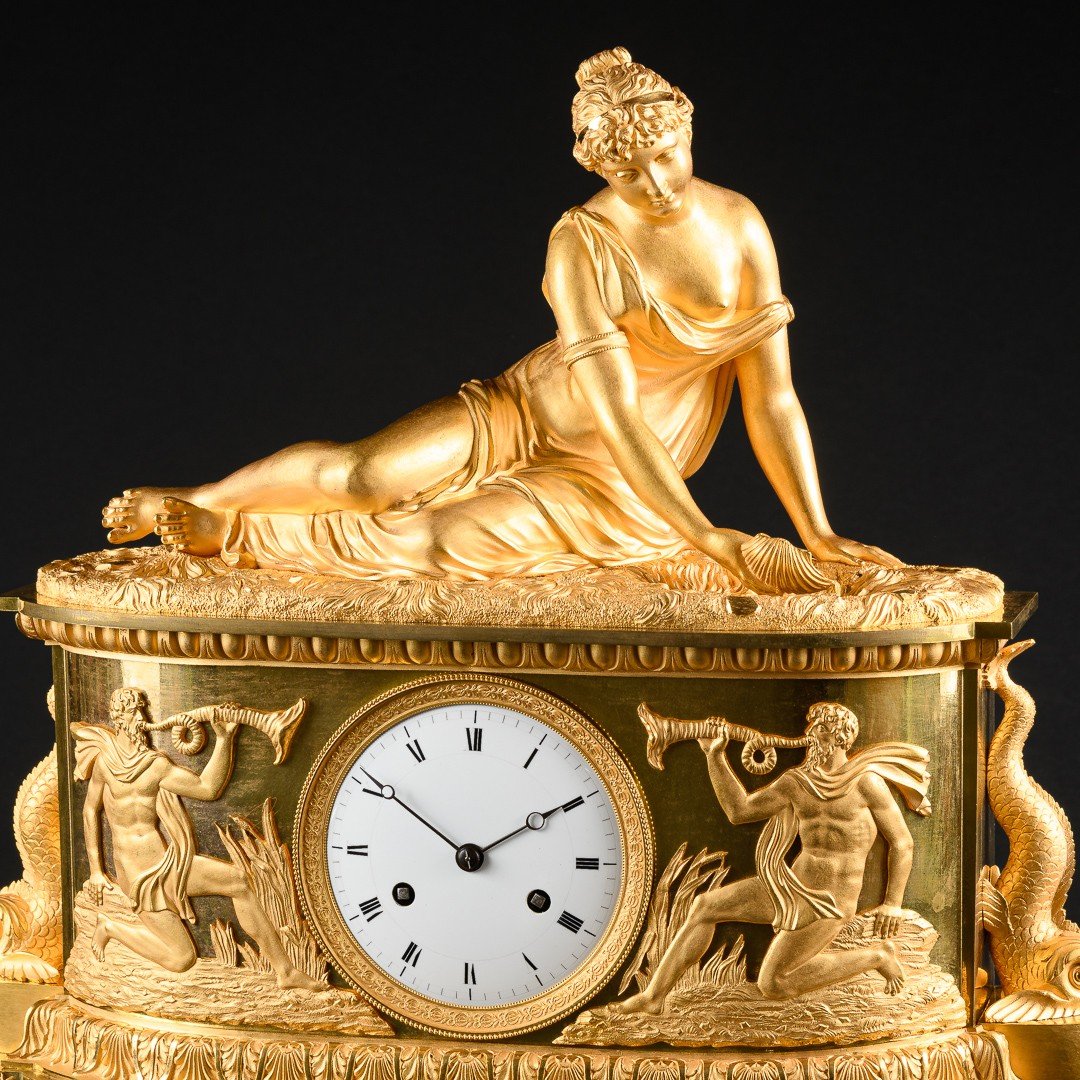

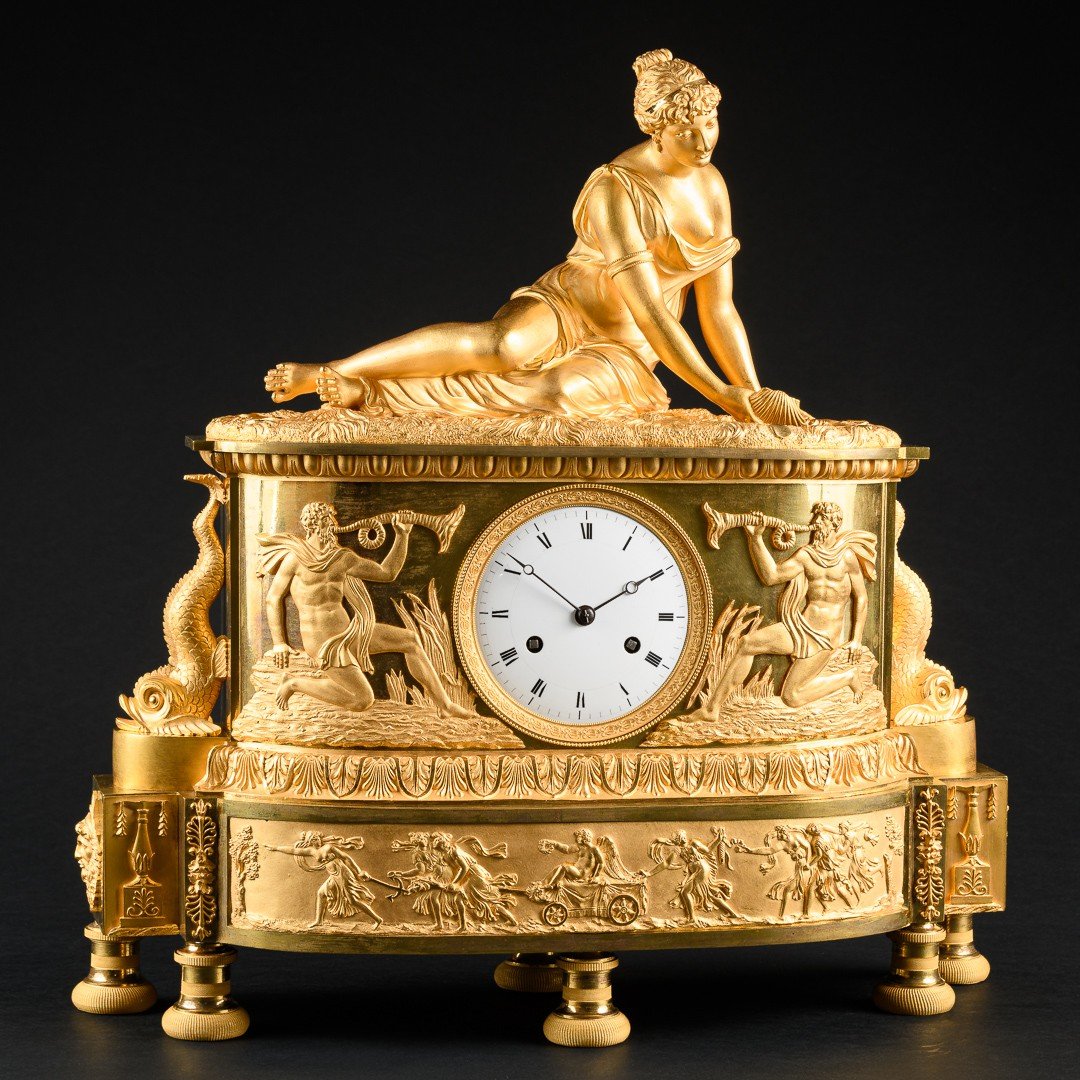


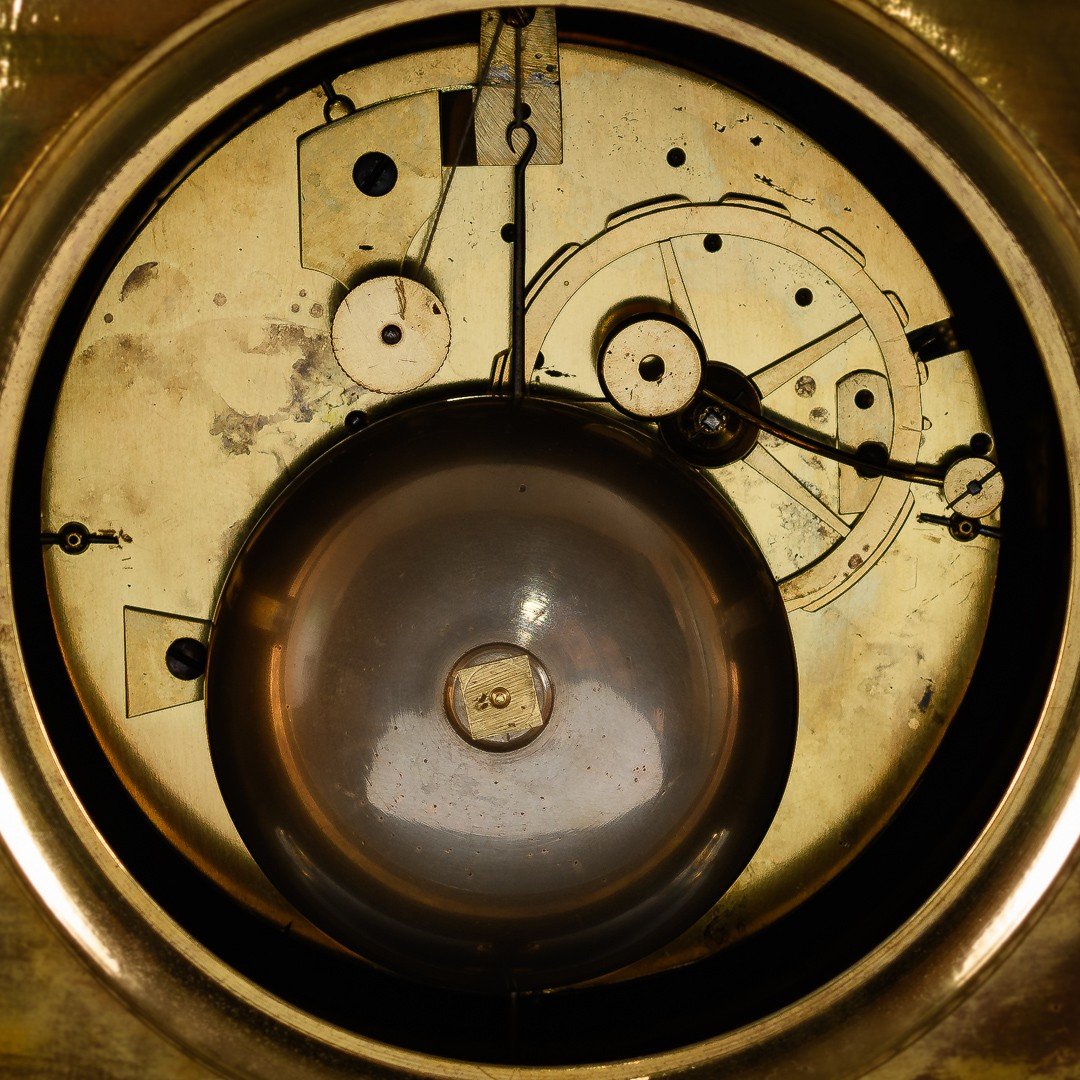







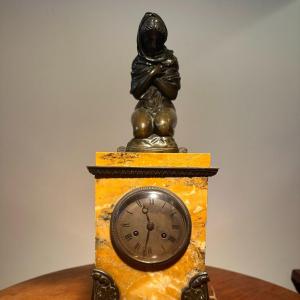
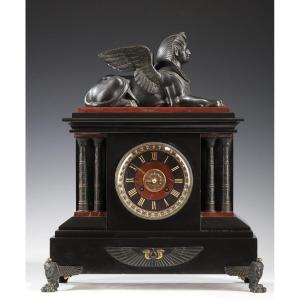
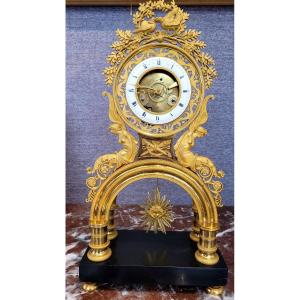



 Le Magazine de PROANTIC
Le Magazine de PROANTIC TRÉSORS Magazine
TRÉSORS Magazine Rivista Artiquariato
Rivista Artiquariato
